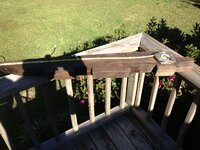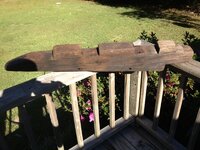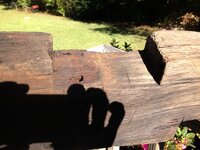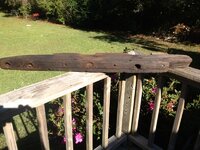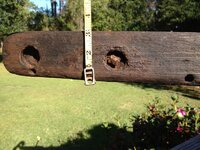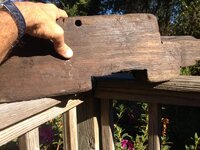bay pirate
Full Member
I found this washed up on the west end if Dauphin Island after Hurricane Isaac. It appears to be a bildge strake or stringer from a wooden ship. It's all hand cut (notice the tool marks) and the nails are hand forged and appear to be rivet style. None of them are brass. It measures 3'8" by 3" and everything is cut at a 110* to a 70* angle. I think it's a piece of the ship those shrimpers found in the 80s. Looks like there is some left


